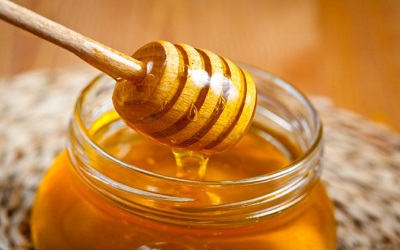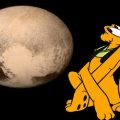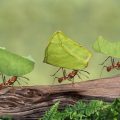PTE考生目前最大的问题之一就是练习题缺乏。除了有限的基本官方书(PLUS,Testbuilder, OG)之外
就没有题了。很多英语基础不是很扎实的同学很难找到练习材料。悉尼文波雅思PTE培训学校专门为澳洲,尤其是悉尼、墨尔本的PTE考生准备了适合PTE听力阅读练习的科学60秒。各位PTE同学可以练习PTE听力中的summarise spoken text和PTE口语中的retell lecture,PTE听力口语-科学60秒-Frosty Moss练习记笔记技巧和复述。废话少说,下面开始:
You have bees to thank every time you drizzle some honey into your tea.
And the human–honeybee relationship is long–standing.
Iconography of honeybees adorns 4400-year–old walls in ancient Egypt.
Rock art has been found that depicts a stone age bee harvest.
But exactly when early farmers began to exploit bees has been unclear.
Those farmers exploited bees for more than honey.
Research has shown that they also employed the beeswax for cosmetics, fuel, medicine, and to perform rituals.
Beeswax contains complex fats that leave a recognizable residue on pottery and other archaeological artifacts.
And scientists have now used that beeswax residue to analyze what they’ve determined to be the earliest known human–and–bee association, dating back some 9,000 years.
The researchers surveyed Europe, the Near East and northern Africa.
They found beeswax on pottery vessels from Neolithic farming sites in Anatolia, in or near modern–day Turkey.
They also discovered the first evidence of beeswax at Neolithic sites in Northern Africa.
And the lack of wax residues in Ireland, Scotland and the Scandanavian peninsula led them to conclude that those locations were above what must have been a northern limit for honeybees.
The study is in the journal Nature.
The researchers say that the beeswax residues at these human–occupied sites may be clues pointing to the very beginnings of bee domestication.
With thousands of years of sweet results for us all.
词语解释:
Drizzle: [ˈdrɪzl] v.下毛毛雨
Iconography: [ˌaɪkəˈnɒgrəfi] n.图解
Depict: [dɪˈpɪkt] v.描述
Residue: [ˈrezɪdju:] n.残渣
Peninsula: [pəˈnɪnsjələ] n.半岛
悉尼文波PTE原创首发





